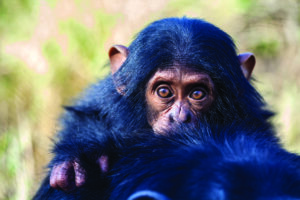A species of jellyfish called Turritopsis dohrnii can revert back to its juvenile form, rendering it essentially immortal. Elephants rarely get cancer even though they have nearly 50 times as many cells as humans—that’s likely because they have an ample supply of a key cancer-fighting gene. Bottlenose dolphins can switch their insulin resistance on and off, a trait that could be used to control diabetes.
We share this planet with millions of species, each of which has evolved its own survival strategies. Studying those strategies sometimes points pharmaceutical companies and others in the medical community toward interesting avenues of research…and occasionally, animal survival strategies even point to things that we can do on our own to improve our health and longevity.
Bottom Line Personal asked David B. Agus, MD, author of The Book of Animal Secrets: Nature’s Lessons for a Long and Happy Life, what we can learn from animals about taking care of our health.
Rhinos and exercise-related joint pain. Rhinos can weigh more than 5,000 pounds and run at speeds above 30 miles an hour—that’s faster than any human. But despite the pounding that rhino legs endure, their joints show no signs of inflammation. Two aspects of rhino running likely contribute to their incredible joint health—rhinos run in straight lines, with few sudden joint-stressing changes of direction…and rhinos use their impressive sprinting speed only rarely, more often moving at a conservative pace.

Lesson: Minimize the odds of leg problems by selecting exercises that require short bursts, not long stretches, of high-intensity activity and that don’t involve too many sudden, high-speed changes of direction. Good choices: Doubles tennis and pickleball provide short bursts of intense exercise punctuated by breaks in the action between points…and, unlike singles tennis, they generally don’t require players to cover too much ground laterally.
Dogs and sleep. Dogs sleep a lot—12 to 14 hours per day, on average. That’s because dogs usually don’t sleep very deeply, remaining somewhat alert for potential threats. Interestingly, the sleep patterns of dogs are comparable to those of humans sleeping in beds other than our own—we tend not to feel completely secure in unfamiliar beds, so our brains remain somewhat alert and we don’t sleep deeply.

Lesson: Take a few simple steps to make hotel- and guest-room beds seem more familiar and thus safer to your sleeping brain. Pack a pillowcase from home, and slip it over the pillow provided so the brain senses a familiar and comforting scent. Also pack the bedside clock and/or nightlight that you use at home, so the glow in the bedroom seems familiar.
Fish and physical activity. Many species of fish must swim continually to survive—without forward movement, water doesn’t flow through their gills and they can’t get oxygen from the water. While humans don’t have gills, our bodies still require regular movement to remain healthy. Not only is physical activity crucial for cardiovascular health and overall fitness, the human lymphatic system—which plays a crucial role in immune response, cancer prevention and digestion—depends on the rhythmic movement of the legs and other muscle contractions to function properly. And unlike the circulatory system, it doesn’t have a pump to keep things flowing.

Lesson: Being sedentary prevents our body from functioning properly. A study published in The Lancet found that just 15 minutes of exercise per day is correlated with three years of additional life expectancy.
Pigeons and navigation, pattern recognition and cognitive health. Pigeons have a remarkable ability to find their way home even after traveling long distances. Pattern recognition is among the skills that allow pigeons to achieve their navigational feats—they create mental maps of the landscape below as they fly and identify patterns in those maps that reveal their location. How good are pigeons at pattern recognition? Amazingly, pigeons trained to spot patterns that suggest cancer in magnified cellular samples perform this task as well as human cancer experts, according to a team of researchers at institutions including University of California Davis.

The human brain also is quite good at pattern recognition and navigation—but in today’s world, we don’t always use these skills…and failing to do so might be detrimental to our cognitive health. A study by researchers at Canada’s McGill University found that people who frequently rely on GPS technology while driving have higher rates of cognitive decline as they age than those who don’t.
Lesson: Modern technology such as GPS means that we don’t have to find our own way very often anymore—but maybe we should. Every now and then, it’s worth walking or driving an unfamiliar route without the help of GPS. That might make us uncomfortable or cost us some time, but navigational challenges probably are good for our brains.
Giraffes and blood pressure. Giraffes have incredibly high blood pressure—as high as 220/180 mmHg. Normal blood pressure for a human is less than 128/80 mmHg. Giraffes need that pressure to pump blood from their hearts all the way up their famously long necks to their brains. But despite their blood pressure, giraffes generally don’t suffer from cardiovascular problems. A number of evolutionary adaptions allow giraffes to handle their unique circulatory system challenges, including at least one that humans can mimic. Giraffes have extra-tight tissue and skin in and on their legs to prevent blood from pooling in their lower extremities. Humans can achieve a similar effect by wearing compression socks or stockings.

Lesson: Compression stockings are tight but not too uncomfortable if fit correctly (ask your pharmacist to help with fit). They can improve blood flow, reduce risk for some types of blood clots and reduce leg swelling and pain. They’re especially useful for people who can’t move around much, perhaps because they’re stuck in an airline seat for a long flight or are bedridden…who have certain circulatory problems, such as deep vein thrombosis…or who must spend long hours on their feet. Warning: Compression stockings offer some giraffe-like circulatory benefits, but no stockings will help humans survive for long with extremely high blood pressure.
Chimps and diet. Humans and chimpanzees share around 99% of their genetic code—yet chimps almost never get cancer and perhaps even dementia. There are a number of possible explanations for this, but one major factor could be what we eat—humans and chimps are genetically very similar, but our diets are very different. Most of us eat lots of highly processed foods, while chimps eat mainly fresh fruit and other unprocessed plant-based items. Chimps do eat meat, but it’s typically only a small percentage of their diet.

Lesson: Consume a largely plant-based diet, with modest amounts of meat. A Mediterranean-style diet is a good example. Also favor fresh foods over heavily processed foods that have unhealthful additives such as added salt or sugar.
Albatrosses and divorce. Albatrosses typically mate for life, but some albatross relationships do fail. The albatross separation rate is 1% to 3% per year—but in especially hot years, it rockets up to around 8%, according to researchers at Portugal’s University of Lisbon. The heat alters the albatross’ schedules, creating relationship stress.

Lesson: Don’t make major relationship decisions when you’re dealing with stress from things unrelated to your relationship. Unlike overheated albatrosses, we can wait for calmer times to make life-altering choices. It’s not only our relationships that are at stake…it’s our health—separation and divorce are associated with dramatically worse health outcomes, including substantially higher mortality rates.


